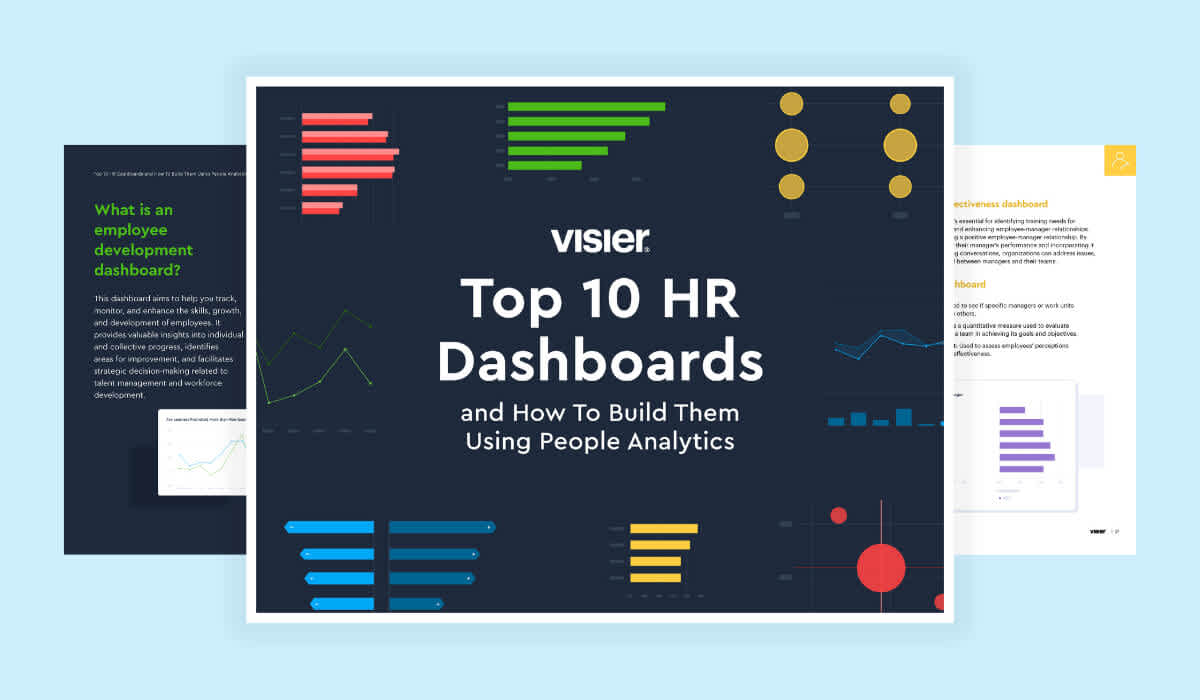Strategic People Management: Building a Stronger Workforce for Long-Term Success
Effective people management is critical for organizations that want to attract and retain top performers. Learn more here.

Employees are one of your most important assets, so hiring and retaining the best performers is critical. People management encompasses practices that include hiring, developing, and retaining employees. It is an effective way to support your employees while helping the company grow and reach its goals.
What is people management?
People management is a set of practices that includes talent acquisition, onboarding, development, and retention, all while providing continuous support to the organization and individual employees.
It falls under the umbrella of human resource management (HRM) and includes a wide variety of responsibilities. People management begins with the hiring and onboarding phase, but it doesn’t stop there. Learning and development, internal mobility, performance management, engagement, and retention are other crucial components.
In the realm of HRM, you’ll also encounter the term “people strategy”. Do not confuse it with people management, though. The two are similar concepts, but they’re not the same.
People management refers to day-to-day activities related to your employees. People strategy takes a more strategic approach to workforce management, requiring long-term plans that align with the company's goals and industry trends.
What is a people manager?
A people manager, also called simply a manager or a supervisor, is a person responsible for leading and overseeing a team of employees. They play a vital role in motivating, engaging, and guiding their team so that they can reach the company’s goals.
A good people manager leads by example and looks not only at the performance and engagement of their team but also at their well-being. They need to be good problem-solvers, be able to mitigate conflicts, and coach their team so they can achieve the desired results and grow in their careers.

7 key components of people management
People management is a complex process that encompasses everything from hiring to performance management and retention. Here are seven key components to keep in mind.
1. Recruiting and creating a strong team
People management begins with the talent acquisition phase. To be successful, you need a deep understanding of the person you’re looking for, both in terms of experience and core values.
Creating a strong talent acquisition and onboarding program will be crucial to developing a strong team that works well together. Ensure you have the best tools and be transparent about your goals and expectations.
2. Understanding your team
You can’t effectively manage a team if you don’t know them. Many managers will form a strong grasp of each person’s role in the company and their skills. But good people management goes far beyond that.
It is equally important to understand employees’ core values, their personality, and their professional goals. All this will help you motivate employees, ensure they are working towards their goals, and help them become more engaged.
3. Communication
Communication should always be a two-way street. Effective people management skills are more than a manager who communicates updates and demands to their employees.
Instead, the people manager should create a communication channel where people can come and express their thoughts. Employees and managers can give feedback, establish expectations, and discuss project direction.
4. Collaboration and engagement
Engaged teams that work well together are more productive and perform better. That’s why collaboration is key in people management.
Sometimes, this happens seamlessly and teams work well together with no external help. Other times, managers need to make sure teams work together by assigning tasks, guiding, and motivating them.
5. Conflict resolution
Everyone wants to avoid conflicts at work, but that’s not always possible. When conflicts happen, a manager's ability to mitigate them or to be a mediator is critical.
Acknowledge the fact that people will have differences and, instead of antagonizing them, help them come to an understanding. Work with the team to find a solution and prevent things from getting worse.
6. Diversity and inclusion
Teams that are not inclusive will not work well together. It may feel like they do for a short while. But, long term, a lack of diversity and inclusivity can lead to disengagement, poor performance, and even conflicts. Ensure that everyone feels welcome and respected and that they have equal opportunities to create stronger teams.
7. Feedback and recognition
Last, but not least, people management should include feedback and recognition. Employees want to know how they’re doing and if they’re meeting expectations.
Offer ample constructive feedback to each person on the team. If your compensation program allows it, include merit rewards or bonuses to recognize the top performers. This can increase engagement, satisfaction, but also performance.

Why is people management important for businesses
Effective people management directly impacts performance, engagement, and the overall success of a company. Good managers boost employee motivation, communication, and collaboration. Strong people management can also reduce voluntary turnover, thus reducing costs for the company and ensuring there are fewer skill gaps.
When employees work in an environment where they feel valued and safe, they can share ideas, are more creative, and can solve problems faster. Plus, effective management reduces team disruptions by resolving conflicts.
With teams that work harmoniously together, and are productive and engaged, the company can thrive, focusing on achieving its goals. This helps the company grow, build an excellent reputation, and be more competitive.
How to create and support an effective people management program
Creating an effective people management program requires more than selecting a few people to act as managers. Here are some steps to get you on the right path.
1. Define your goals
Like all things business-related, creating an effective people management program starts with setting goals. Yours might be to improve retention, have better performance, or attract the right talent. Whatever they are, make your goals SMART—Specific, Measurable, Achievable, Relevant, and Time-bound.
2. Benchmark your starting point
You know where you’re headed, but before you can start working towards those goals, you need to know exactly where you’re starting from. People analytics can be an extremely useful tool at this stage. Look at all the data related to the people in your company to gain valuable insights and make data-driven decisions.
3. Create a comprehensive program
Based on your assessment and your goals, you can now design a people management program. The process can cover talent acquisition, onboarding, development, retention, and more.
4. Training and development
Some people are natural-born leaders. But most will need support to perform their best and become better managers. Offer training to improve their leadership abilities, including communication, conflict resolution, and giving feedback. Without strong people managers, your program has little chance of success.
5. Monitor the evolution of the program
Early in your program, you’ll need to define what metrics you want to track. Often, these will be in correlation with your goals. For instance, if you want to improve retention, then metrics like voluntary attrition and engagement can show you if you’re headed in the right direction.
Don’t restrict yourself to one category only, though. The more relevant metrics you track, the better you’ll understand how your program is going.
6. Adapt and adjust
A people management program is not static. Your workforce changes, and so do your business goals and even the market. Adjust your program as needed whenever the KPIs aren’t showing the results you want or when external or internal factors require it.
How people analytics can help develop strong people management
People management is a complex process that requires more than placing a few people in strategic leadership positions. You need to understand your employees, the market, and where your business is headed.
People analytics can show you the data that matters when it matters. With it, you can answer common workforce questions like:
“What contributes to higher levels of engagement?”
“What are the primary reasons employees leave the company?”
“How long does it typically take to fill a position?”
“Are there disparities in promotion rates or compensation among different demographic groups?”
All this shows you patterns within your organization’s workforce and problem areas that you need to address. It will also enable you to better understand your managers and their impact on their teams and the organization.
You’ll be able to create training that aligns with their needs, instead of generic programs that will do little to help them. This can guide managers and help them become real people leaders that motivate and guide their teams to success.
On the Outsmart blog, we write about workforce-related topics like what makes a good manager, how to reduce employee turnover, and reskilling employees. We also report on trending topics like ESG and EU CSRD requirements and preparing for a recession, and advise on HR best practices how to create a strategic compensation strategy, metrics every CHRO should track, and connecting people data to business data. But if you really want to know the bread and butter of Visier, read our post about the benefits of people analytics.



